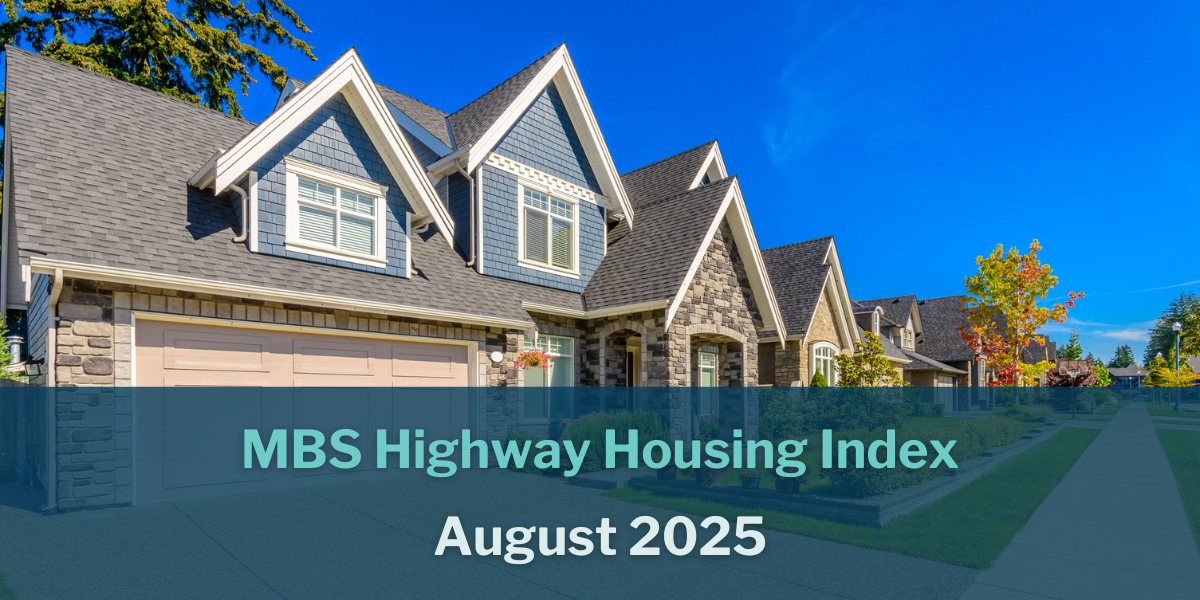The Fed's preferred inflation gauge exceeded expectations in May. Meanwhile, the housing market saw soft home sales, although annual home prices continued their rise in April. Continue reading for more details and analysis.
· Inflation Update: Key Measure Slightly Higher Than Expected
· Existing Home Sales Remain Sluggish in May
· New Home Sales Slow
· Annual Home Price Growth Decelerates, But Remains Solid
· Other Economic Highlights
Inflation Update: Key Measure Slightly Higher Than Expected

The latest Personal Consumption Expenditures (PCE) report, a crucial gauge for inflation, showed headline prices rose just 0.1% in May, bringing the annual rate to 2.3%. These figures were mostly in line with forecasts.
However, the focus is often on Core PCE. This measure strips out volatile food and energy costs and is the Federal Reserve's preferred inflation metric. Core PCE increased 0.2% in May, coming in slightly above the 0.1% forecast. On an annual basis, Core PCE now stands at 2.7%, just above the 2.6% expected.
A major factor keeping Core PCE elevated remains shelter costs, which make up a significant 18% of the index. While official government data shows slow improvement, real-time market data (like from Zillow and Apartment List) suggests rents are softening faster than the official numbers currently reflect.
What’s the bottom line? Making further progress toward the Fed's 2% goal for Core PCE might be challenging in the near term, potentially until early 2026. Here's why: The monthly Core PCE figures from June through December 2024 that will drop out of the 12-month calculation over the coming months were already relatively low (ranging from 0.1% to 0.29%). This makes it harder for upcoming monthly price changes to significantly lower the annual rate.
Looking ahead, the picture could improve in 2026. The monthly figures from January and February 2025 that will drop out next year were higher (0.34% and 0.48%). Replacing these higher numbers with potentially lower monthly increases should make it easier to see faster progress toward the 2% target.
Existing Home Sales Remain Sluggish in May

Existing home closings saw a slight increase in May, rising 0.8% from April to an annual rate of 4.03 million units. While this was better than expected, it marked the weakest sales pace for May since 2009.
Meanwhile, Pending Home Sales, a key indicator tracking signed contracts on existing homes and forecasting future closings, rose 1.8% month over month in May after a notable drop the previous month.
What’s the bottom line? According to Lawrence Yun, Chief Economist for the National Association of REALTORS®, "persistently high mortgage rates" are the main culprit behind the subdued sales activity. He expects sales to rise if mortgage rates fall in the second half of the year.
As for inventory, the number of homes available rose to 1.54 million units – an increase of 6.2% from April and 20.3% higher than a year ago. However, this supply is still significantly lower than pre-pandemic figures and far from the 4 million units seen during the housing bubble. This persistent shortage of available homes has helped support home price appreciation. More on that below.
New Home Sales Slow

New home contracts pulled back sharply in May, falling 13.7% from April to a 623,000-unit annual pace. This pace missed expectations and reached the lowest level since October. Despite the significant monthly drop, sales were only about 4% below the average monthly pace seen in the first quarter (654,000) and down 6.3% compared to a year ago.
What’s the bottom line? The total number of new homes available for sale reached 507,000 at the end of May, which is the highest amount since November 2007. However, it’s important to look at the details: only 119,000 of these homes were completed and ready for immediate move-in. The majority were either still under construction (271,000) or not yet started (117,000).
Despite the high overall inventory number, the market still needs more readily available supply to meet buyer demand, especially given the historic shortage of existing homes for sale.
Annual Home Price Growth Decelerates, But Remains Solid

The widely watched Case-Shiller Home Price Index, often called the "gold standard" for tracking home values, shows that nationwide home prices rose 0.6% from March to April before seasonal adjustments, though they declined slightly (-0.4%) after adjustments. This difference occurs because prices typically increase during spring, so seasonal adjustments moderate these expected gains.
Looking at the bigger picture, national home values increased 2.7% compared to a year ago. This is a bit slower than the 3.4% annual growth seen in March. Major urban markets continued to outperform the national average, with the 10-city composite index rising 4.1% and the 20-city index up 3.4% year-over-year.
The FHFA House Price Index showed similar trends: prices increased 0.6% before seasonal adjustments but decreased 0.4% after adjustments, with a 3% year-over-year gain. Note that FHFA only tracks homes purchased with conventional mortgages, excluding cash purchases and jumbo loans.
What’s the bottom line? Case-Shiller noted that “housing supply remains severely constrained.” Many existing homeowners are holding onto their low, pandemic-era mortgage rates under 4%, while new construction is not keeping pace with demand. This shortage of supply continues to support home prices and has helped prevent the declines some analysts had anticipated.
Other Economic Highlights
U.S. Economy Contracts: The U.S. economy declined by 0.5% in the first quarter of 2025, according to the final GDP report. This was a larger contraction than the previous estimate of -0.2%. The decline was primarily driven by increased imports ahead of tariffs and reduced government spending. However, growth in investment and consumer spending provided some offset.
Jobless Claims Trend Higher: Jobless claims continue to show a rising trend, particularly for those already receiving benefits. Initial weekly claims fell slightly by 10,000 to 236,000, but this figure remains elevated compared to earlier this year. More notably, continuing claims surged by 37,000 to 1.974 million, reaching the highest level since November 2021. Continuing claims have now been above 1.8 million for over a year and above 1.9 million for five consecutive weeks.
Ready to close more deals?
ListReports automatically delivers personalized marketing collateral to your inbox helping you engage with your customers and prospects.


.png)
.png)

